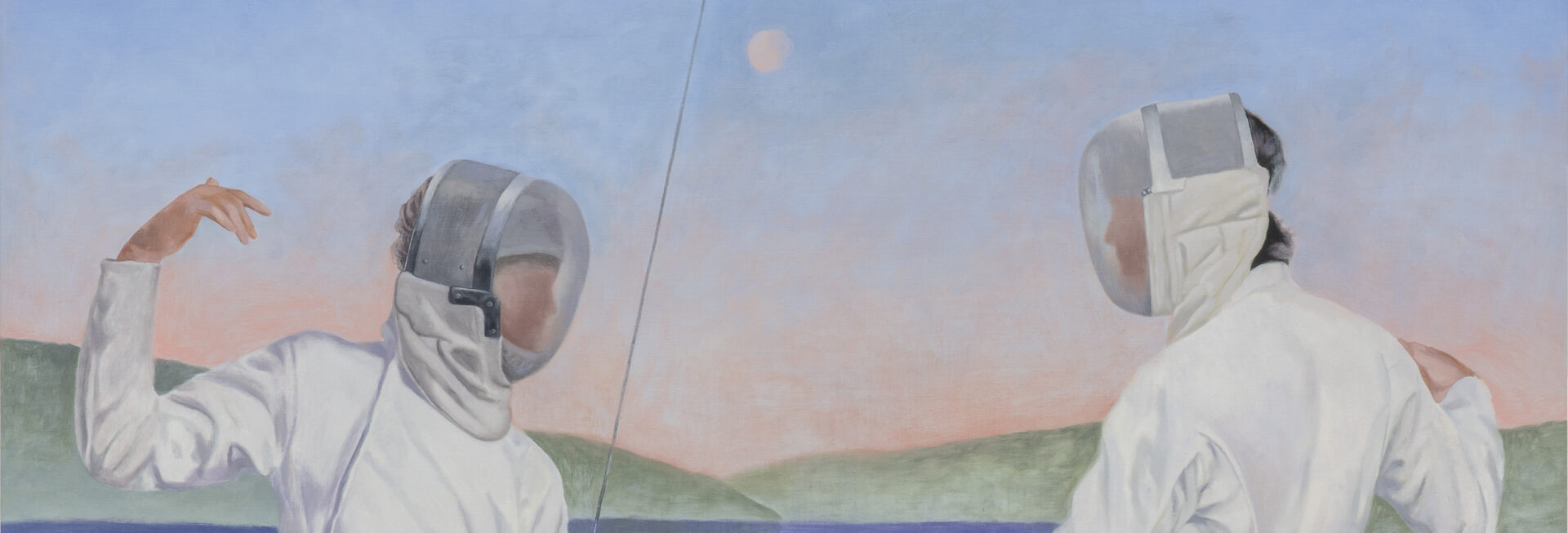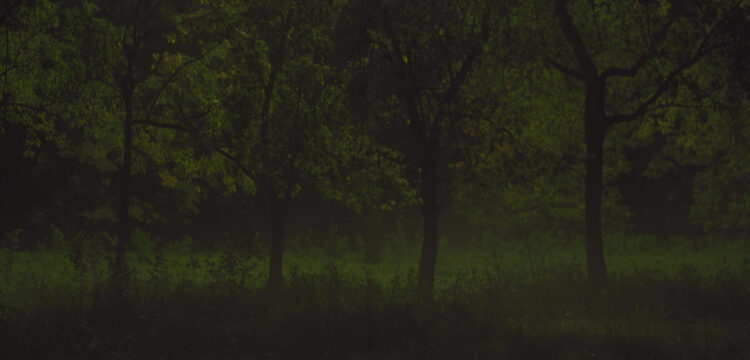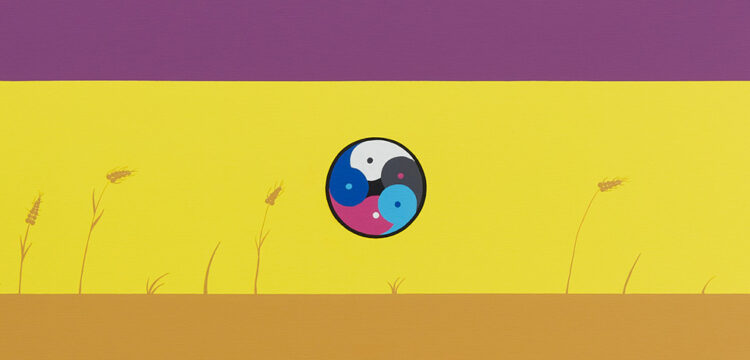The Unreality of the Everyday
In the Poetry of Valdrin Thaqi
Kosovar artist Valdrin Thaqi makes his debut at the Milan gallery eastcontemporary with You do realise, there is a place where the sidewalk ends, his first solo exhibition. The restricted selection of works presented in the show takes us inside a poetic and dreamlike image. The artist emphasises collective and personal memory and experience through his painting practice.
A century ago, the German critic Franz Roh coined the stylistic notion of “Magic Realism” to name the research of certain Neue Sachlichkeit artists.
A few years later this notion, thanks to the writer Massimo Bontempelli, ended up being used in Italy to indicate the practice of artists such as Mario Sironi, Ubaldo Oppi, Antonio Donghi, Felice Casorati, and Gino Severini. Tracing the rhetorical figure of the oxymoron, Magic Realism introduces in the realistic and mimetic representation of reality an element that transcends it.
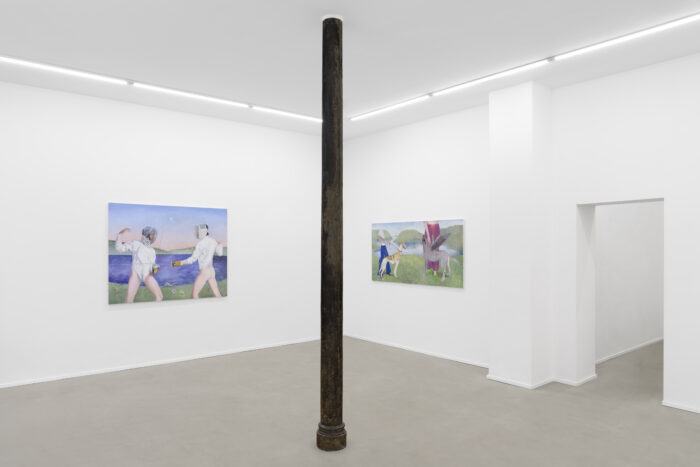
A comparable “tendency” in the world of contemporary painting has apparently made a comeback, or perhaps what has returned is the fascination about a particular kind of suggestions and images drawn from reality, that seem to oscillate between the unreality and immateriality of dreams, or between the heaviness and the materiality of matters, corpses, and object forms. Over the centuries, these “returns” cyclically pass through figurative arts and its formal characteristics, however this alternation never happens in the same way over time. Needless to ask what these oscillations are due to. The answers would be plural, almost always linked to contingent factors: social, cultural, political, and economic facts, among others.
It is as if there were silent rules linked to human nature, or non-written laws, that lead to modify our artistic expressions with similar cyclicality.
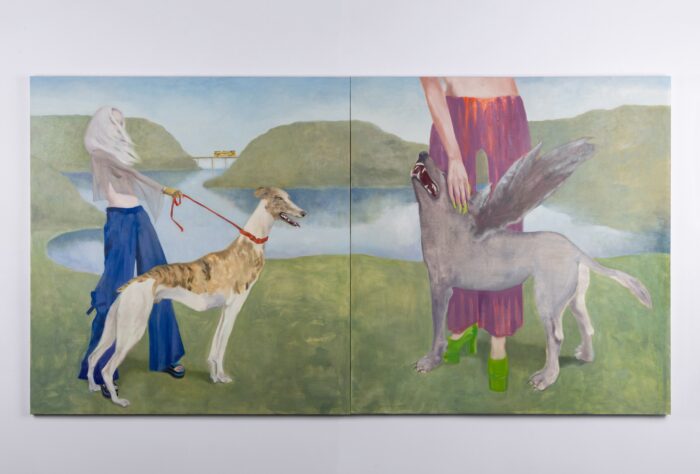
The work of the Kosovar artist Valdrin Thaqi seems to be no exception to this tendency. Even for the untrained eye, it is easy to find in his research some of the characteristics of Western painting from the first half of the 20th century. His poetics is particularly current, though it takes up from the lesson taught by metaphysical painting and the experiences associated with Magic Realism and New Objectivity. In fact, his narrative painting style extends beyond the perception of reality. It breaks the logical/temporal order with the appearance of symbols and figures existing in the artist’s psyche. In his works, the human experience is being expressed in its existential and existentialist characteristics through a homogeneous palette of rarefied and pastel colors: bright blues, lilacs, greens, and purples that gradually fade away.
Valdrin Thaqi paints bodies, symbols, scenes, and animals within an atmosphere of expectation, in a gloomy fixity, in an unreal everyday life. These are landscapes and subjects from his experience, ghosts, or simply unwanted dreams. We often find them near water, the fundamental element in his narrative, which recalls the very essence of this element, that is, what gave life the possibility to generate itself.
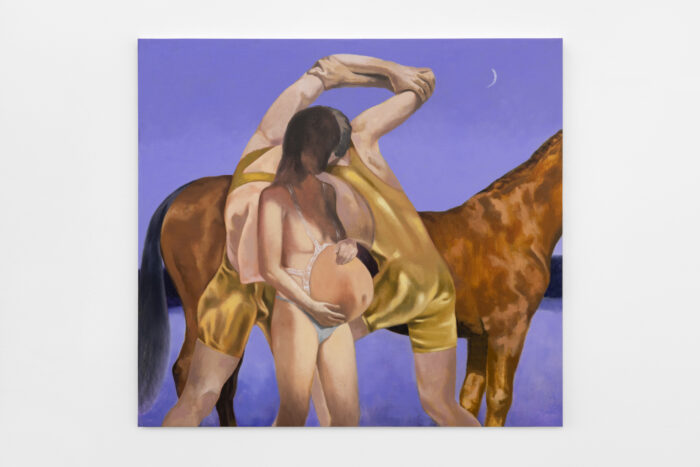
In the work Fight me (2022), two young fencers seem to perform through dance a composition present in the painting Le figlie di Loth of Carlo Carrà. However, here the subject of the painting is violence, shown as a game: an almost intellectual and sporting exercise, controlled and tamed. The foils seem to continue the lines of their bodies. They are their natural extension. In the background, a lake landscape with soft color fluctuations. At the bottom center of the canvas, two narcissus.
The white narcissus is a flower with contrasting symbolism. For the Celtic culture it represents purity, but for the Greco-Roman culture it is the flower of the afterlife. Perhaps it is no coincidence that these two daffodils stand at the edge of the lake, lying on the grass like the young Narcissus before losing himself in his own image and drowning in the still waters. In this work, the two flowers are meant to be witnesses of the boundless ego of the human being.
The reptiles are creatures that are both terrestrial and aquatic, and in the painting Fight me a Komodo dragon emerges from the waters of the lake. This animal, considered one of the most territorial and aggressive male species, is here to remind our bestial origins, our animal instincts, our natural and atavistic violence.
These are symbologies that converse, that generate a subterranean and silent narrative, that invite us to see beyond what is represented and that introduce into the painting meanings that transcend the image itself. The artist seems to undermine an unambiguous direct reading of his paintings, deploying conflicting meanings in them and stripping his images of countless information. By embracing this restrictive strategy, it is as if he is trying to make these images universal, leaving them open to multiple interpretations, and thus requiring from the viewer to interact with the work through different and fruitless attempts of guessing coherent message.
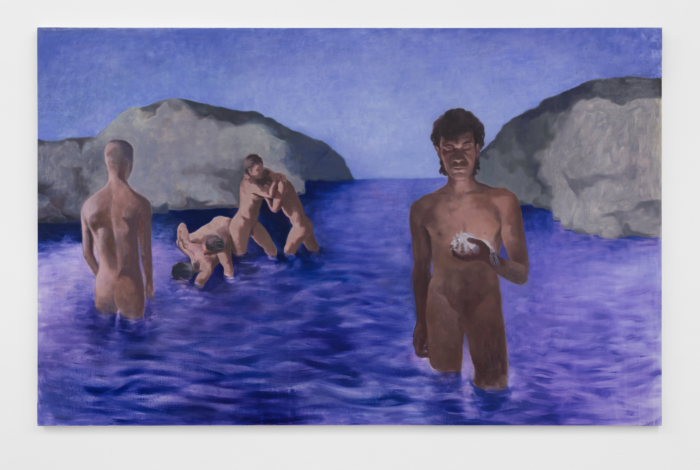
The element of water and that of violence are also the subjects of the painting A gift from the depth of sea (2022). Here, the classic peaceful and playful image of bathers is being developed through the key of livid and sexual drives expressed in a twilight landscape. A young man holding a fish comes towards us and once again a symbol of our origins returns to attention.
A fixed, tormented and timeless aspect is the one of young man in Homesick (2022). A gaze paralyzed in an alienating fixity, attentive to the movement of clouds crowding at the horizon. We, the observers, are out. The witnesses of a profound sense of loneliness and agitation. The paint here is scratched and spread as if on a wall covered by a dusty gypsum plaster, which gives to the colors of work a vaporous and thinned effect like mural painting.
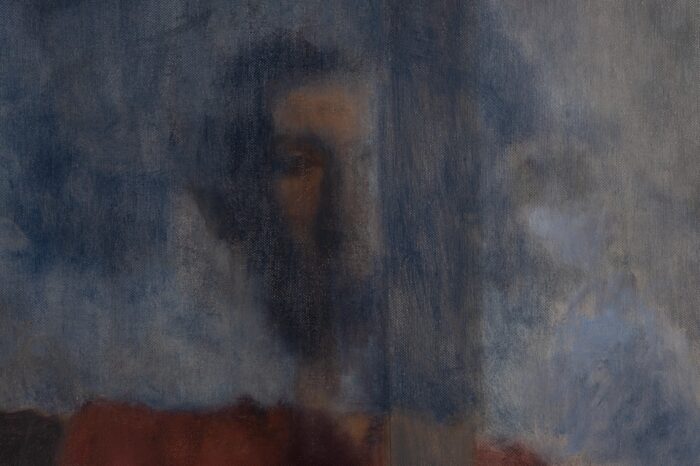
Sparingly distributed, the symbols dot Thaqi’s narrative dimension, just as in the case of Three Views of a Secret (2022). A sleeping young man is accompanied by a small harpy that towers over him, bringing storm into his apparently peaceful sleep.
Thaqi sometimes reminds me the painter Michael Borremans and his way of painting; as for Borremans, his characters are absent actors who have no conscious grip on their circumstances. Their condition is similar to that of the distressed and bewildered protagonists of Samuel Beckett’s plays.
In Thaqi’s works, images are painted as a coded language and the visual syntax indicates a deeper meaning, an existential philosophical dimension. The life of the subjects that animate his paintings can be interpreted in a similar way to that given by Albert Camus in The Myth of Sisyphus: an absurd, thrown life, driven by impulses, almost alien to the characters themselves.
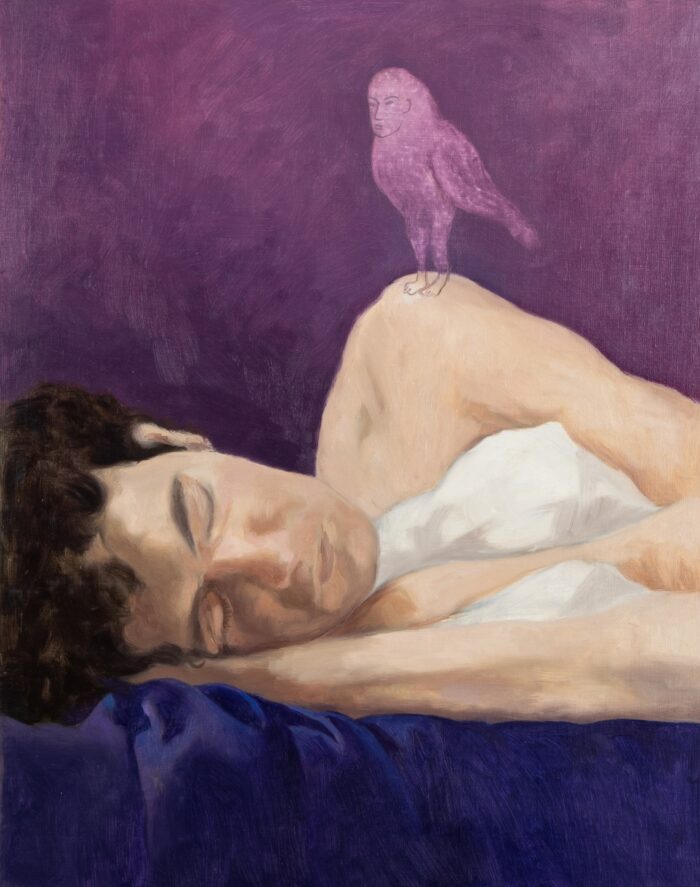
The main thrust of his poetics seems to be a quest oriented toward the uncertain nature of the human psyche, characterized by extreme contradictions, fears and fragility. An expression by means of images, of the depths and darkness of the human soul, made up of emotions and impulses.
Everything appears seemingly calm and peaceful in the artist’s vision. The landscapes are limpid, taken at dusk or dawn, waiting for a change: the total light given by a zenith sun or the darkness of a deep and dark night.
It is this subtle dimension of suspension that makes these atmospheres and scenes fascinating. The scenes that appear to arouse abyssal questions in those who observe them, and that remind us of the words of the critic Franz Roh, who used the term “magic” to indicate the “mystery that does not fit into the represented world but hides behind it.”

